In our development of PediNotes, we sought to find as many ways as possible to make processes more efficient across hospital departments. Our neonatal EMR is equipped to not only help neonatologists and pediatricians, but also provides much-needed support for nurses, pharmacists, hospital administration, and more. Specific features include billing integrations, database exports, and efficient internal and external communication.
One commonly overlooked benefit of PediNotes for neonatologists and neonatal nurse practitioners is the use of Vermont Oxford Network (VON) database extraction. With this data housed in PediNotes, we’ve developed a process that pulls all the information you need, exports it for the VON, and allows you to check the status of your VON submissions.
How does PediNotes make VON data extraction easier?
Manual entry of data into eNICQ is very time-consuming and unnecessary when you have access to the proper tools.
PediNotes has been a part of the Vermont Oxford Network for years. Around eight years ago, we created a process in our software to systemize electronic data extraction for all the data required for the VON. Our team created a series of rules that will pull answers to VON questions based on the babies’ diagnoses or the procedures the babies have had.
With PediNotes’ background configuration, we have set up tools that you can manipulate to determine which diagnosis you want to use to answer the VON questions, what procedures you want to appear, and how your lab may specify a possible bacterial culture report. You can customize all of these things, so when PediNotes extracts the data into eNICQ it will already be in the format that you need.
Because of PediNotes’ data warehousing and easy configuration tools, VON data extraction has become a 1-step process. You go into the main menu, pick VON data extraction, and it will automatically pull the data for babies based on what registry you are in. You can choose the timeframe for your patient parameters to pull specific data from the past month, the past week, etc. You can also pull data specifically by medical record number or by account number.
PediNotes then displays these patients in a grid with the VO number in the front column and all of the baby’s information. You can sort this grid and export all data or data for select patients as needed.
After exporting your VON data from PediNotes, the only question you’ll need to manually answer when you go into eNICQ is whether the baby is still in the hospital. All other data will be recorded in the eNICQ database automatically.
Checking VON Data Status in PediNotes
PediNotes’ powerful interoperability allows our program to read and display the current status of eNICQ data, such as your new patient status.
Your patient will not have a number if they have never been admitted to eNICQ. However, if you’ve already submitted the patient’s data, PediNotes will show you the status you would see on the first page of eNICQ. It will read complete or correct, or it will have an error or incomplete message for babies that are missing data.
Access to this status information in PediNotes allows you to easily determine which patients need further work and update their data accordingly. Using the grid in PediNotes, you can then export only the incomplete patients to the Vermont Oxford Network.
How much time is saved extracting VON data through PediNotes?
Electronic extraction of VON database information saves us hours and hours. For our largest unit, which has about 1200 admissions a year, we spend fewer than 12 hours a year maintaining and extracting our database.
We’ve agreed as a team to answer the VON questions in PediNotes in a certain fashion, making the data easier to pull and more consistent. We also include very specific sections like respiratory therapy and delivery in PediNotes that are based on how VON data is organized. For example, we select whether a baby has been on CPAP as part of the patient data in PediNotes. These questions are designed to save time in the long run because they mimic the data that the VON needs to extract.
Because all this data is systematically entered and stored in PediNotes, we don’t have to spend time manually reviewing and extracting the information. Everything flows directly through once we extract for the VON database. As mentioned, the only manual time our team spends in eNICQ is to answer the one question confirming whether the patient is still in the hospital.
PediNotes has transformed the tedious process of Vermont Oxford Network data extraction into a much more efficient task, allowing us to submit all of our data quickly and timely, so we can get back to tending to the needs of our patients.
If you’d like to see an up-close look at VON data extraction in PediNotes or any of our software’s other beneficial features, please send us an email at info@pedinotes.com, give us a call at (225) 214-6421, or sign up for a free demo.
Our demo is very interactive. We’ll walk you through PediNotes and give you access to a cloud-based version of the program that you can use to manipulate patient information.
Please also subscribe to our email list to receive notifications about our latest blogs and updates to PediNotes.





